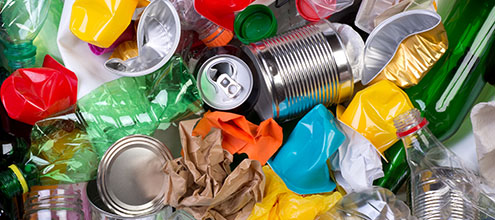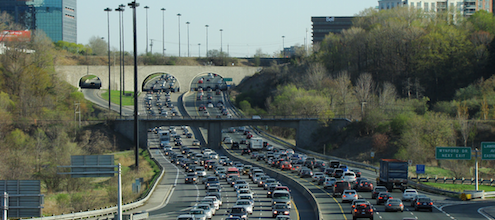
Alberta falling behind in making manufacturers reduce waste
Here’s an unpopular opinion: we should spend more time thinking about garbage. After all, waste management services are essential for Albertans. But they’re also not free.
A new report from Canada’s Ecofiscal Commission argues that we can do better. With better waste policies, we can make our waste system more efficient, ultimately saving us money.
One of best options is to reduce the waste generated in the first place. Smart policy can give manufacturers incentives to make products that create less waste or are more easily recycled. But while other provinces are already moving in exactly this direction, Alberta is falling behind.
Before we elaborate, let’s take a step back to look at the bigger picture.
Municipalities — and municipal taxpayers — often bear the brunt of waste-management costs. Better municipal policy can make our waste-management systems more efficient and less costly. When households and businesses that generate more waste pay more, they have incentives to waste less. Over time, this delays the need for new landfills and saves money.
But municipal policies can’t do it all. Municipalities have little or no effect on how manufacturers design and make their products, even though they ultimately pick up the tab for managing the resulting waste.
Provincial governments can fill this gap with “extended producer responsibility” programs (or EPR for short). In a nutshell, EPR programs make manufacturers — either individually or collectively — responsible for managing the waste generated from their products.
Programs can cover a wide range of products and materials, such as packaging and paper, tires, electronics, batteries, and even used oil.
While most provinces are making good progress, Alberta is now the only province without regulated EPR programs. It does have recycling stewardship programs for tires, beverage containers, used oil, paint and electronics, but these programs are government-directed and give manufacturers minimal responsibility. Catching up with other provinces could generate significant benefits.
First, by giving manufacturers flexibility, EPR programs are a cost-effective way to improve recycling and resource recovery. After all, the private sector is better equipped than government to find the least costly way to manage their materials. This can reward manufacturers that make products that generate less waste or to use materials that are easier to recycle.
Second, EPR programs can reduce costs for municipalities and taxpayers. Alberta municipalities, for instance, currently pay for curbside recycling programs through a combination of property taxes and monthly fees. Calgary households, for example, already paid an average of $100 each for their recycling program in 2017. Creating an EPR program for these materials (i.e., paper and packaging) would take the financial burden off municipalities and save taxpayers money.
Third, EPR programs can improve how materials are recycled and managed. They provide centralized systems that collect, sort, and process materials. These systems can increase the amount of material that is recycled and can also improve the quality and value of these materials.
Finally, EPR in Alberta would fill a critical policy gap in the patchwork across provinces. Over time, a co-ordinated approach could reduce costs even further, given that it’s cheaper and easier for manufacturers to comply with one unified EPR program instead of 10 different ones.
Waste management may not be exciting. But ultimately, implementing EPR programs in Alberta can reduce costs, improve recycling systems, and save taxpayers money.
Municipalities have an important role to play, but so do manufacturers. Provincial EPR policies can better align incentives. The rest of the country is moving ahead with EPR. It’s time that Alberta catches up.
Dale Beugin is Executive Director of Canada’s Ecofiscal Commission.
Bev Dahlby is the Research Director at the School of Public Policy at the University of Calgary and a member of the Ecofiscal Commission.
This article was originally published in the Edmonton Journal, October 17th, 2018




Comments are closed.